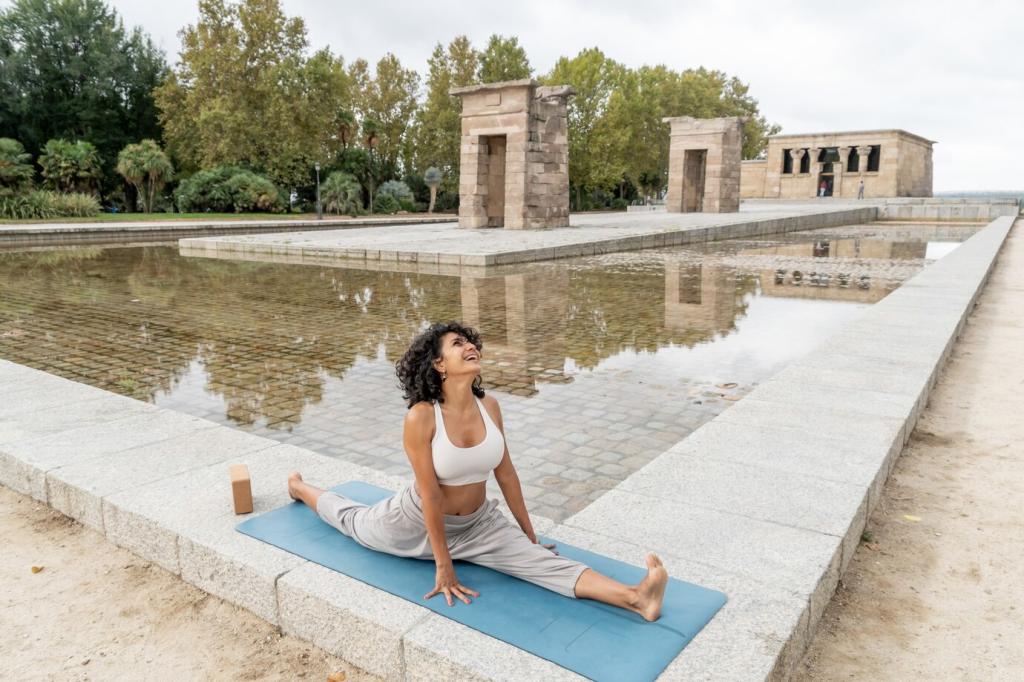Creating a Zen Atmosphere in Your Yoga Space
Chosen theme: Creating a Zen Atmosphere in Your Yoga Space. Step into a sanctuary where breath slows, distractions melt, and presence feels natural. Whether you practice in a spare room or a sunlit corner, we’ll shape calm with light, texture, scent, and ritual—then invite you to share your own peaceful setup and subscribe for fresh monthly inspiration.
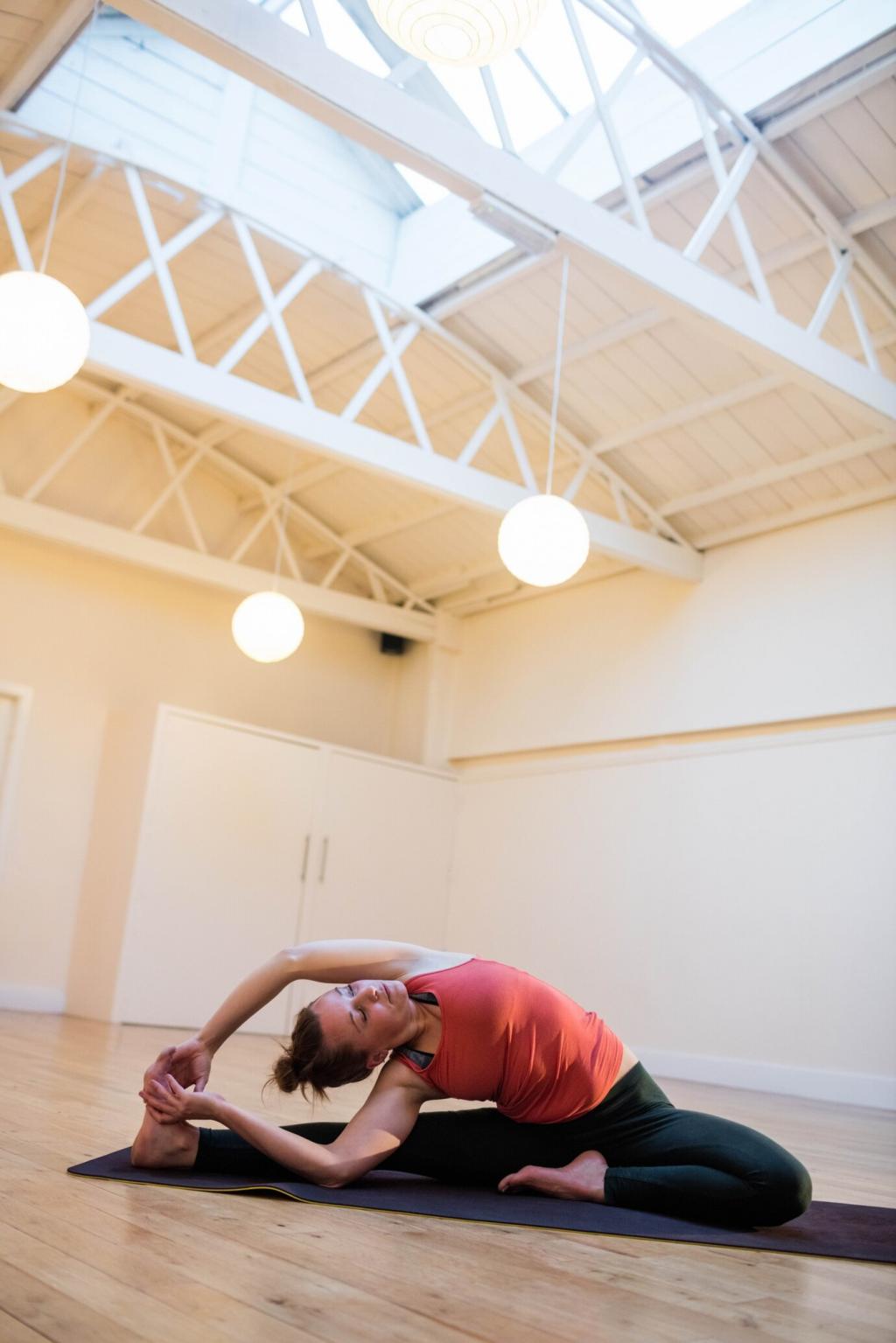
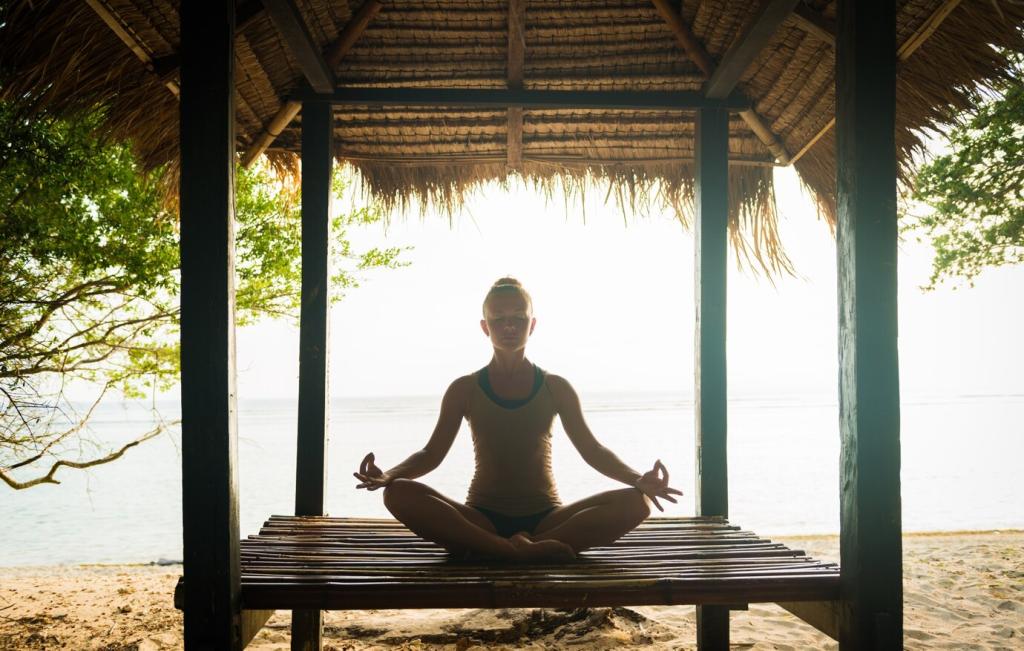
Simplicity and Decluttering for Instant Calm
Keep a simple woven basket near your mat and, before each session, sweep away anything unrelated to practice—mail, cords, jackets, stray thoughts. This quick reset lowers stress by reducing visual clutter, primes attention, and turns arriving on the mat into a ritual you’ll look forward to repeating daily.
Natural Light, Color, and Texture
Aim for gentle morning light if possible; it cues circadian rhythms and reduces grogginess. Sheer curtains diffuse glare to roughly 300–500 lux, ideal for slow flows and meditation. If windows are limited, use a full-spectrum lamp angled wall-ward to mimic daylight without harsh, eye-level brightness.
Soundscapes and Silence
01
Designing for Quiet
To reduce echo and outside noise, add a thick rug, fabric wall hangings, and soft furnishings that absorb sound. Door sweeps and weatherstripping can cut hallway noise dramatically. Aim for a background level near 30–35 dB, calm enough to hear breath yet not so silent that every creak distracts.
02
Music with Intention
If you use music, choose slow tempos and sparse arrangements that mirror your desired pace. Layer ocean or rain recordings underneath to mask street noise. Keep volume low enough that inhale and exhale remain audible. Share your favorite calming playlist in the comments to inspire other readers.
03
The Power of a Closing Bell
Close practice with a single chime or singing bowl. One clear tone signals completion to the nervous system and helps anchor a memory of calm. Over time, the sound itself becomes a shortcut to spaciousness—ring it before morning emails and feel your body settle with reassuring familiarity.
Scent and Breath
Lavender and bergamot often support relaxation, while eucalyptus can feel clarifying. Diffuse lightly—two to four drops—and keep good ventilation. Avoid direct skin application before inversions, and research pet-safe options if animals share your home. Let scent be a whisper, never a fog that steals attention.
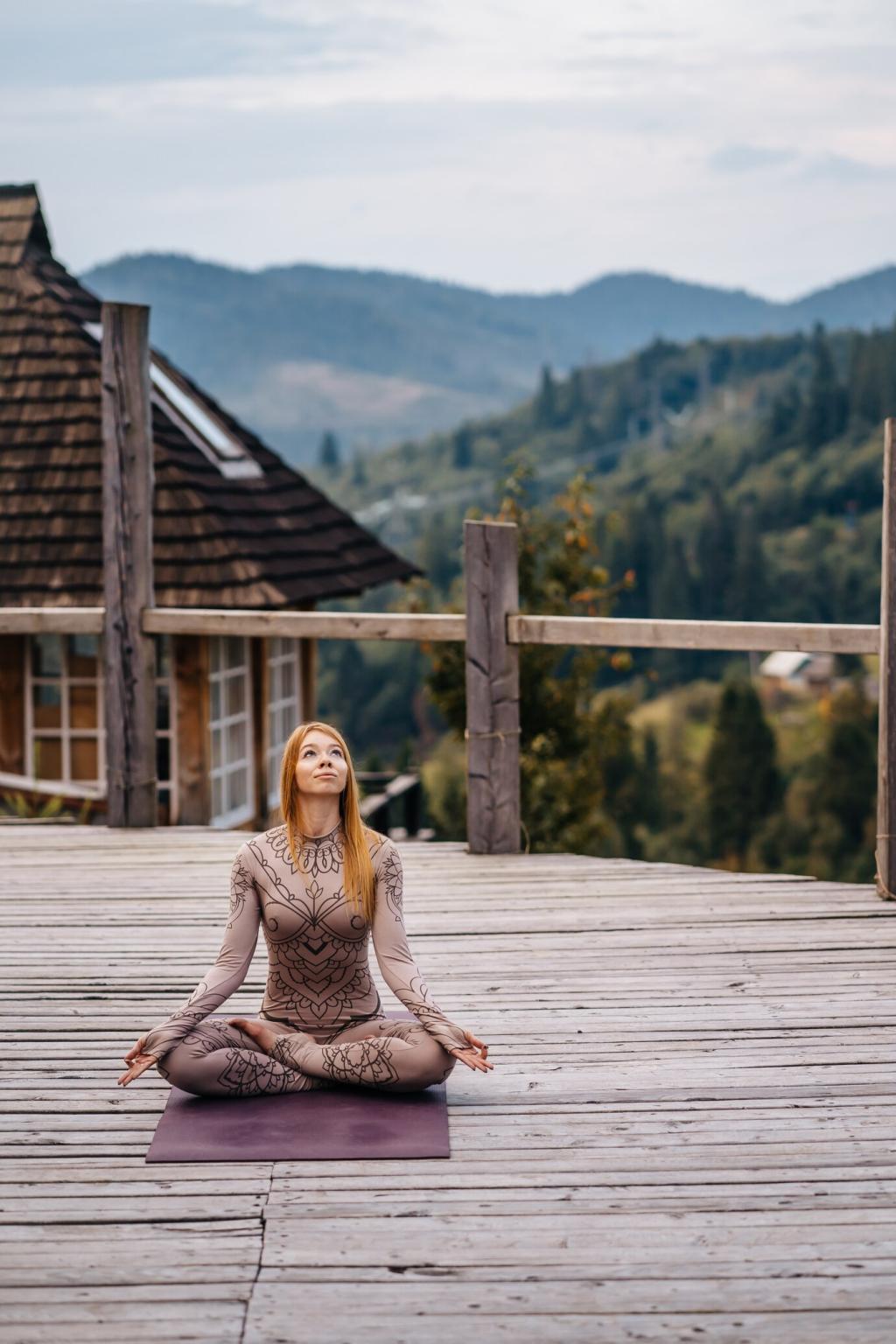
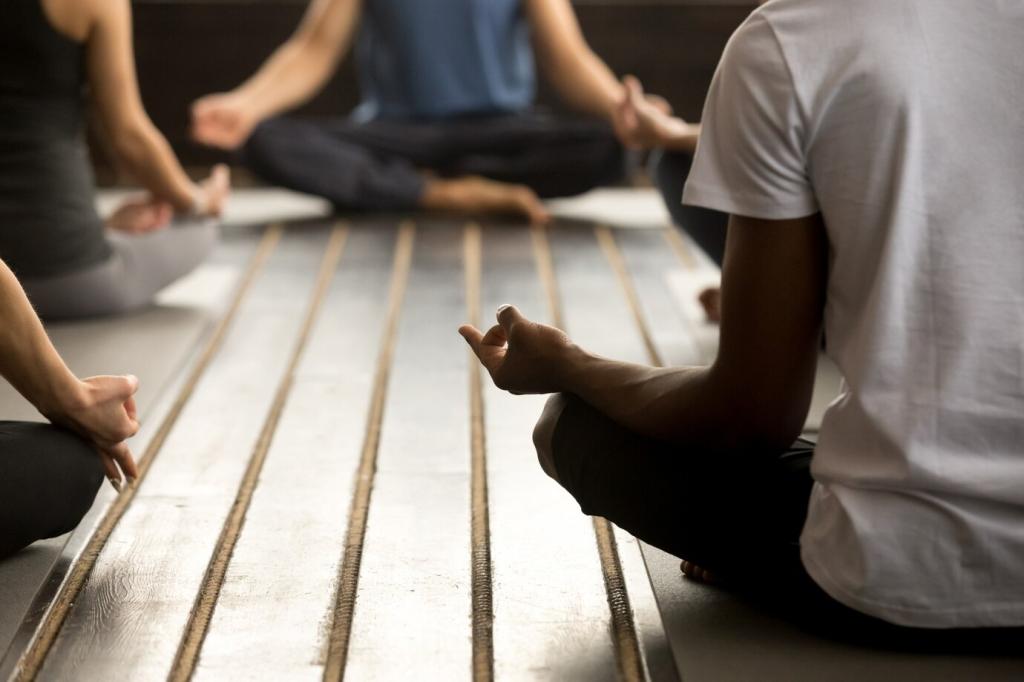
Scent and Breath
Open a window before you unroll your mat, even in winter, to refresh oxygen and reduce stale odors. A quiet HEPA filter can help if you’re near traffic. Notice how your breath feels after five minutes of airflow; post your observations to help others tune their routines.
Nature Inside: Plants, Wood, and Stone
Biophilic Touches That Soothe
Add a wooden stool, a smooth river stone, or a bamboo tray for props. These natural materials ground the eye and hand, which supports mindful transitions. Place one living element within view of your mat so your drishti can rest on something alive, steady, and uncomplicated.
Low-Maintenance Plant Allies
Snake plant, pothos, and ZZ plant tolerate lower light and irregular watering, making them forgiving companions. Keep soil tidy, wipe leaves occasionally, and position away from drafty doors. Share a photo of your plant-and-mat setup; your choices might help a newcomer begin greening their corner sanctuary.
A Simple Seasonal Altar
Curate a small shelf with a candle, a found leaf or shell, and a handwritten intention. Refresh items with the seasons to honor change. The altar isn’t decoration—it’s a mirror for your practice. When life feels rushed, one glance can remind you why you came to the mat today.
Layout, Flow, and Sacred Boundaries
Center your mat perpendicular to a calm wall, leaving space at the head for breathwork and at the sides for wide stances. Keep blocks front-left and front-right for easy reach. This predictable map reduces friction and keeps your attention available for sensation rather than logistics.
Layout, Flow, and Sacred Boundaries
Choose one quiet focal point: a small plant, a simple print, or a soft-textured wall hanging. Too many points split attention. When balancing, let your drishti rest there, steady but kind. Over time, this single visual anchor becomes a trusted friend in wobbly moments on and off the mat.
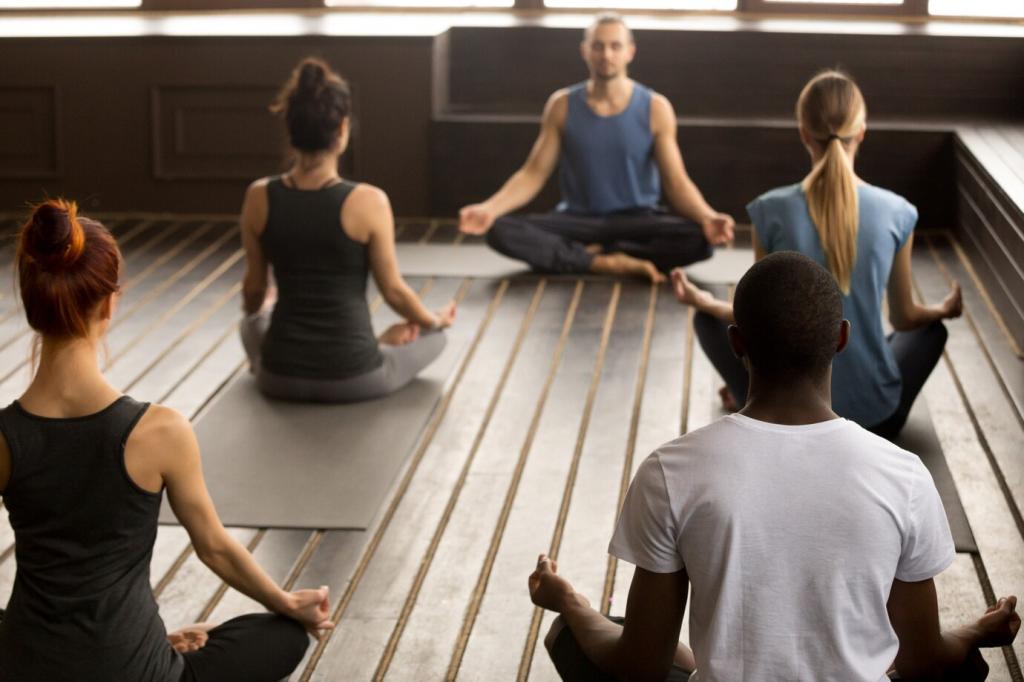
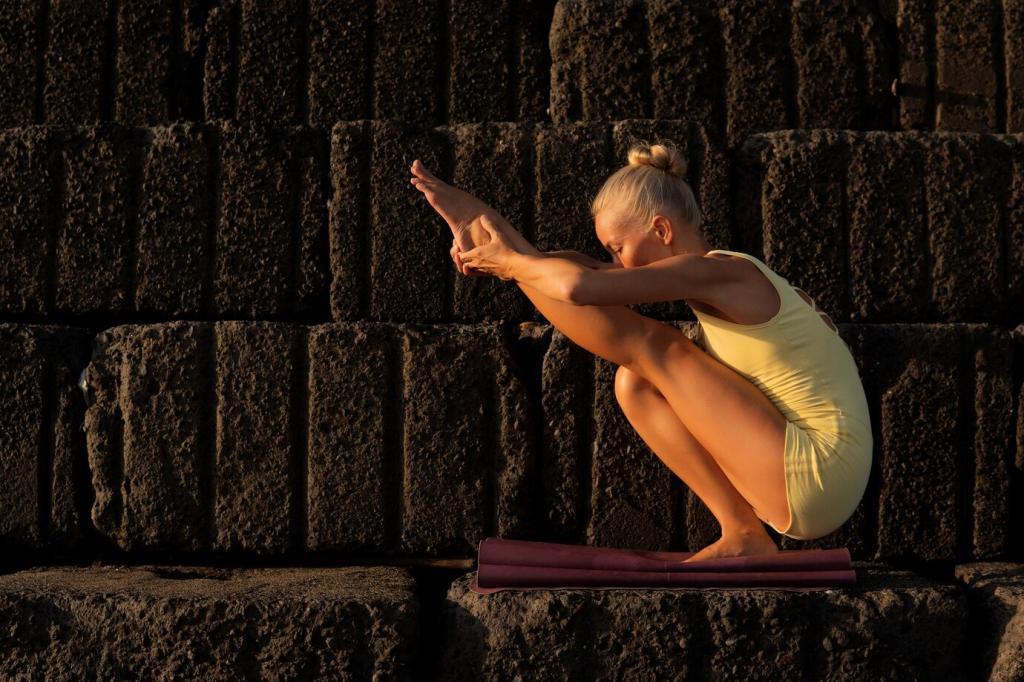
Evening Lighting and Digital Quiet
Use two or three warm light sources instead of one bright overhead: a dimmable floor lamp, a small table lamp, and a candle. Aim for 2700K or lower. The layered glow flattens harsh shadows, supports relaxation, and keeps attention inward without straining your eyes.
